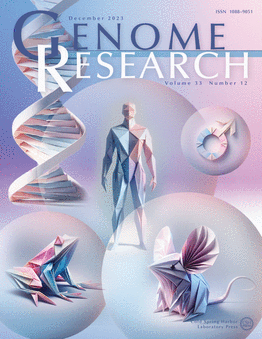利用深度学习分类器和综合蛋白质数据库探测反刍动物真核微生物
IF 6.2
2区 生物学
Q1 BIOCHEMISTRY & MOLECULAR BIOLOGY
引用次数: 0
摘要
宏基因组学,特别是基因组解析宏基因组学,极大地加深了我们对微生物的认识,阐明了它们的分类和功能多样性以及在生态学、生理学和进化中的作用。然而,由于缺乏全面的参考基因组数据库和强大的生物信息学工具,各种微生物组中的真核生物群体,包括哺乳动物胃肠道中的微生物群,在宏基因组研究中仍然相对不足。反刍动物的胃肠道,尤其是瘤胃,虽然纤毛虫和真菌的多样性相对较低,但真核生物的生物量很高,这对饲料消化、甲烷排放和瘤胃微生物生态有重要影响。在本研究中,我们开发了GutEuk,这是一种生物信息学工具,改进了目前可用的Tiara和EukRep,可以准确地从元基因组中识别真核生物序列。GutEuk针对不同序列长度的高精度进行了优化。它还可以区分真菌和原生动物序列,进一步阐明其独特的生态,生理和营养作用。GutEuk被证明可以促进对1000多个瘤胃宏基因组中原生动物和真菌的综合分析,揭示了原生动物之间比以前记录的更大的基因组多样性。我们进一步整理了几个反刍动物真核蛋白数据库,大大提高了我们区分反刍真菌和原生动物与原核生物的功能作用的能力。总之,新开发的软件包GutEuk及其相关数据库为深入研究胃肠道真核生物创造了新的机会。本文章由计算机程序翻译,如有差异,请以英文原文为准。
Probing the eukaryotic microbes of ruminants with a deep-learning classifier and comprehensive protein databases
Metagenomics, particularly genome-resolved metagenomics, has significantly deepened our understanding of microbes, illuminating their taxonomic and functional diversity and roles in ecology, physiology, and evolution. However, eukaryotic populations within various microbiomes, including those in the mammalian gastrointestinal (GI) tract, remain relatively underexplored in metagenomic studies due to the lack of comprehensive reference genome databases and robust bioinformatics tools. The GI tract of ruminants, particularly the rumen, contains a high eukaryotic biomass although a relatively low diversity of ciliates and fungi, which significantly impacts feed digestion, methane emissions, and rumen microbial ecology. In the present study, we developed GutEuk, a bioinformatics tool that improves upon the currently available Tiara and EukRep in accurately identifying eukaryotic sequences from metagenomes. GutEuk is optimized for high precision across different sequence lengths. It can also distinguish fungal and protozoal sequences, further elucidating their unique ecological, physiological, and nutritional impacts. GutEuk was shown to facilitate comprehensive analyses of protozoa and fungi within more than one thousand rumen metagenomes, revealing a greater genomic diversity among protozoa than previously documented. We further curated several ruminant eukaryotic protein databases, significantly enhancing our ability to distinguish the functional roles of ruminant fungi and protozoa from those of prokaryotes. Overall, the newly developed package GutEuk and its associated databases create new opportunities for in-depth study of GI tract eukaryotes.
求助全文
通过发布文献求助,成功后即可免费获取论文全文。
去求助
来源期刊

Genome research
生物-生化与分子生物学
CiteScore
12.40
自引率
1.40%
发文量
140
审稿时长
6 months
期刊介绍:
Launched in 1995, Genome Research is an international, continuously published, peer-reviewed journal that focuses on research that provides novel insights into the genome biology of all organisms, including advances in genomic medicine.
Among the topics considered by the journal are genome structure and function, comparative genomics, molecular evolution, genome-scale quantitative and population genetics, proteomics, epigenomics, and systems biology. The journal also features exciting gene discoveries and reports of cutting-edge computational biology and high-throughput methodologies.
New data in these areas are published as research papers, or methods and resource reports that provide novel information on technologies or tools that will be of interest to a broad readership. Complete data sets are presented electronically on the journal''s web site where appropriate. The journal also provides Reviews, Perspectives, and Insight/Outlook articles, which present commentary on the latest advances published both here and elsewhere, placing such progress in its broader biological context.
 求助内容:
求助内容: 应助结果提醒方式:
应助结果提醒方式:


